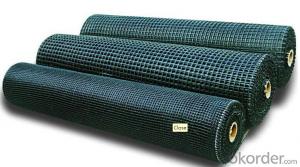The world of civil engineering and environmental projects has been impacted significantly by non-woven geotextiles, which are functional fabrics with a bit of finesse. Instead of being woven with threads, these versatile fabrics are made up of interlocking fibers that produce a dense and flexible material that has found applications in various areas. Non-woven geotextiles have emerged as the most dependable solution to numerous challenges from road reinforcement and embankment protection to erosion control and filtration.
Versatility of Non-Woven Geotextiles
Picture a cloth that can hold up tons of earth moving equipment while still protecting the soil beneath it. Essentially, this exemplifies what non-woven geotextiles do. For multiple purposes ranging from construction sites to ecological recovery plans they become an ideal choice for different reasons due to their unique traits. They are light in weight, easy to handle and can be cut or shaped for any project.
Strength and Durability
Non-woven geotextiles cannot be disassociated with strength issues as well as durability since they were designed with this concern in mind. These materials last for long even when subjected to harsh weather conditions or other natural elements through which they pass them unharmed thereby not undergoing any form of UV degradation since they resist it very much making them good for outside use. In the case of strain on the material during application, their strength is obtained because the fibers are bonded together in such a way that they will remain intact.
Filtration and Separation
Separating out and filtering is essential in civil engineering works; non-woven geotextiles excel at this function by providing a barrier through which water passes while preventing soil particles from migrating away from one place. This dual function serves excellently in areas like drainage systems where prevention of soil erosion is paramount.
Reinforcement and Stabilization
It would be remiss not to mention the reinforcement capabilities of non-woven geotextiles. They are used in soil and other material strengthening, thus stabilizing structures that could have otherwise sunk or shifted. This is especially important for roads where the earth must be able to bear the weight of vehicles.
Environmental Considerations
Non-woven geotextiles, besides being functional, can also be regarded as a tool for environmental conservation; these products can be made from reused materials and therefore employed in projects aimed at restoring and saving the environment. Reinforcing slopes or preventing erosion by water on soils are some of the ways they help to build a healthier planet.
Installation and Maintenance
Many projects find non-woven geotextiles desirable because they need little maintenance after installation and are easy to put up. They can be laid down quickly, often with no need for special tools or equipment. Once in place, there is very little maintenance required which helps in meeting project deadlines within budget.
Cost-Effectiveness
When it comes to cost effectiveness, you cannot beat pulp fiberboard. At only a fraction of the cost for standard materials, they provide excellent performance levels. This makes them perfect for quality constrained jobs running on tight budgets.
Personal Approach
Speaking from personal experience, I have been an eyewitness to the life-changing impact of non-woven geotextiles. The moment they touch the ground, their enchantment begins, providing stability and support where it is most needed. It’s not just about technicalities but how real they can be in projects.
Future of Non-Woven Geotextiles
The possibilities for non-woven geotextiles in the future are many. These textiles will continue to advance as technology does so too. There is an expectation that even more innovative applications will be found for them as they stay ahead of civil engineering and environmental improvement on earth.
In essence, non-woven geotextiles are a testament to human inventiveness and the might of creativity. They are more than just material; they offer solutions to some very pressing problems in this planet. We can anticipate a time when these fabrics become even more important players in our world as we discover new areas of application for them.







